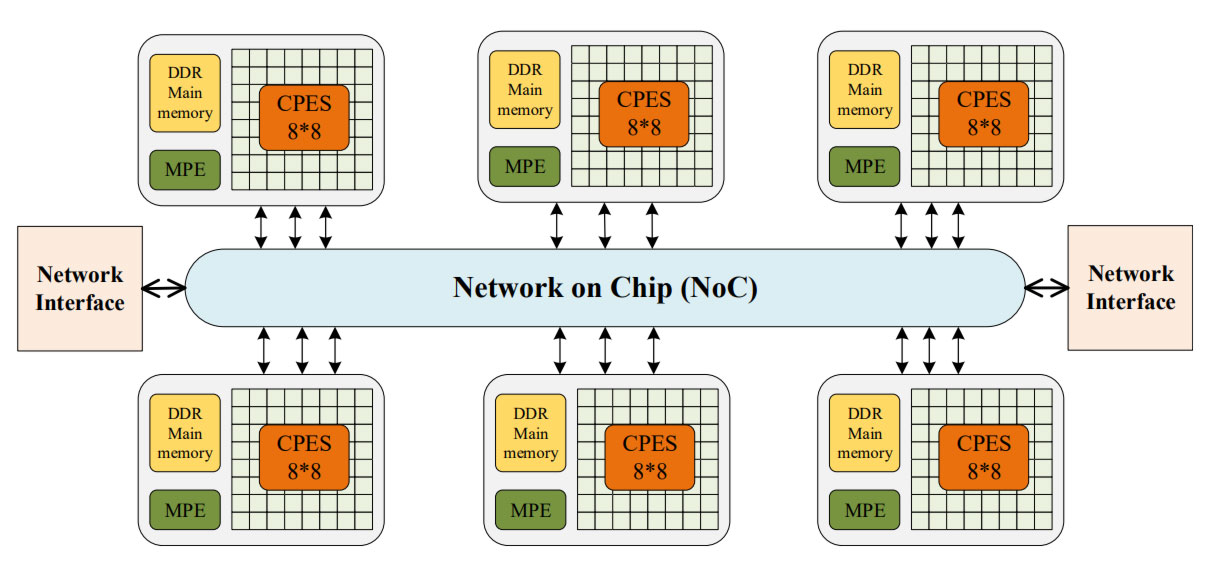40 Million Core Chinese Exascale Supercomputer Performs Quantum Simulations
The new supercomputer has nearly 4x as many cores as the Sunway Taihulight.
A multidisciplinary team of researchers from universities across China recently published a paper (PDF, via Underfox) sketching an efficient and scalable route to solving some of the most complex problems facing scientists today. Among the team's hardware and software innovations, perhaps the most eyebrow-raising claim is that they solved a huge problem with very high precision using an exascale supercomputer packing "up to 40 million heterogeneous sw26010pro cores."
Specifically, the research team is focused on "solving the challenging quantum many-body problem." Without delving into too much detail, the quantum many-body problem embodies both incredible complexity and colossal scale.
Recently researchers have been going down the route of using deep learning-based simulations to tackle these problems, and the Chinese researchers are following this same path. However, they are leveraging up to 40 million compute cores and other innovations in their scientific quest.
What else do we know about the HPC system the researchers wielded during their research and testing? The Sunway Taihulight is currently listed in the HPC Top500 charts as number four in the world rankings. This system, as listed, features 10.6 million sw26010 heterogeneous cores. This isn't the computer the scientists were using, though; they had access to a new next-gen system.
According to the researchers, they are using a "new Sunway supercomputer," and this offers an upgraded processor model dubbed the sw26010pro. This processor features six core groups (CG), each of which is attached to a ring network. Each CG contains one management process element (MPE, control core) and a cluster of 64 computing process elements (CPE, computing core) arranged in an 8 × 8 mesh. This would mean that a single sw26010pro has roughly 6 x 64 cores (384 cores), so the new Sunway supercomputer would require about 104,000 of these processors to hit 40 million cores. This figure tallies with some earlier reports about what we should expect of the next-gen Sunway supercomputer.
The researchers are pitching for the Gordon Bell Prize thanks to their research. This prize is sometimes likened to being a 'Nobel Prize for Supercomputing,' so the researchers have to do more than suggest a bigger hammer to crack a humungous nut. Thus, they discuss many claimed innovations addressing aspects of computing, such as deep convoluted neural network development for quantum many-body problems, algorithm innovations, HPC-AI framework innovations, and others.
Computer software is a major part of any workable solution and "the software environment has been greatly improved on the new Sunway supercomputer, especially for AI applications," according to the researchers.
Get Tom's Hardware's best news and in-depth reviews, straight to your inbox.
The importance of solving challenging quantum many-body problems isn't the major prize in itself. If such issues can be tackled in a meaningful way, researchers will gain clarity regarding potentially valuable exotic physical phenomena. In other words, the research detailed above could lead to key insights and developments in quantum spin liquids, high-temperature superconductivity, supersolids, heavy fermions, fractional quantum Hall effects, and more.

Mark Tyson is a news editor at Tom's Hardware. He enjoys covering the full breadth of PC tech; from business and semiconductor design to products approaching the edge of reason.
